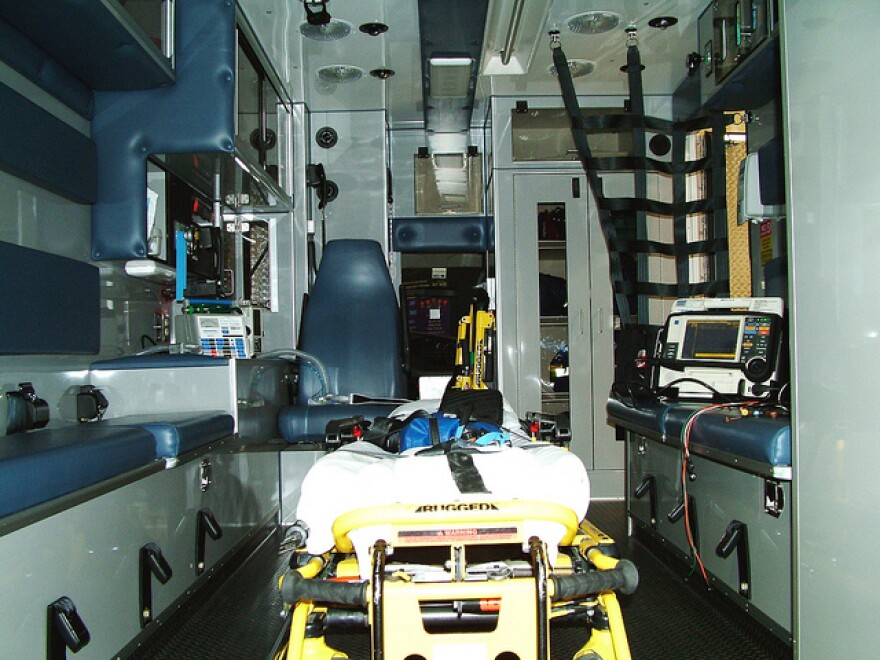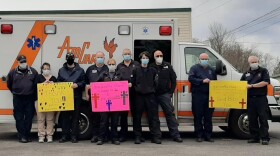When you hear those high pitched sirens coming from the road, you know someone somewhere is being transported to a local hospital or urgent care center. There’s a lot of science that goes into those transports to ensure their safety and efficiency.
This week on “Take Care,” Lorraine Rapp and Linda Lowen speak with Scott Matin on how ambulances and their crews operate. Matin is a 25-year veteran of emergency medical services and vice president of clinical, education and business services for MONOC Mobile Health Services in Wall Township, New Jersey.
Matin says that ambulances come with a variety of providers, but mainly come down to two sets of teams: emergency medical technicians (EMTs) and paramedics.
“EMTs provide basic life support services, they provide CPR, splinting, bleeding control, oxygen, things like that for basic emergencies,” Matin says. “And then there’s the paramedics who provide advanced life support and they provide things like medications, advanced airways, defibrillation and things like that.”
In other words, paramedics will be called for life-threatening circumstances like a heart attack or stroke and EMTs will be called for injuries like falls or broken bones.
The type of call and location help determine which kind of response team arrives on the scene. It can be only EMTs or paramedics or a mixture of both. An EMT ambulance is equipped with basic life support systems and equipment, whereas a paramedics one will have medications, defibrillators and other advanced technology. Matin says these standards run throughout the country.
The type of ambulance is decided by the dispatcher who takes an emergency call. Matin says dispatchers go through certain criteria so they can correctly evaluate the emergency and decide which ambulance is more necessary. Which agency oversees ambulance services depends on the community it is based out of.
“Sometimes it is a third service county or local municipality that runs it,” Matin says. “Other times it’s a private for, or private non-profit, organization. Or it could be fire department-based.”
When it comes to calling in or getting advice from other hospitals during emergency transports, Matin says basic life support ambulances mainly stand by their orders and typical protocol. Advanced ambulance teams typically have the same orders but they might call other hospitals for assistance depending on the patient’s condition.
In addition, in almost every case, the patient ultimately has the decision on what hospital to go to, unless they fit a certain diagnosis or situation. In that case, the ambulance crew will discuss the best course of action. Most ambulance services are covered by insurance and Medicare and Medicaid.
Matin says modern ambulance services are the best and most reliable they have ever been. Compared to fire or police departments, formal EMS services are relatively new, beginning around the late 1960s. Nowadays, Matin says EMTs and paramedics can do just about anything in an ambulance that can be done in an emergency room.
“There’s a saying that the emergency room department is being brought to you when it comes to the paramedics arriving at your house,” Matin says.
“The care that is given today is superior than it was years ago,” Matin adds. “We’re learning a lot. The education is fantastic, the paramedics are great clinicians these days, and we’re doing right by our patients in the community that we serve and I’m really proud of that.”







